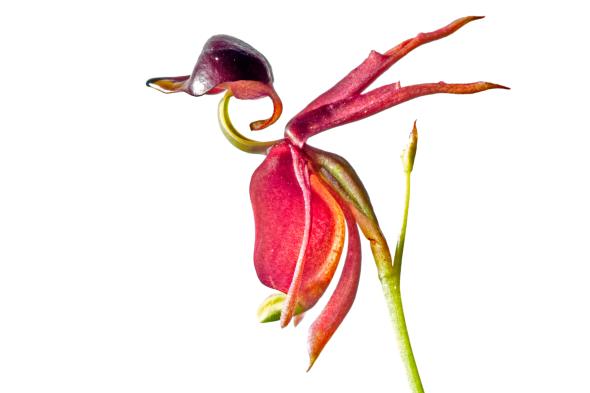A Plant That Looks Like Poop and Other Sneaky Disguises

Plants just sit there all day and look pretty, right? That’s what they want you to think. Many orchids and other plants are great impressionists, masquerading as insects, animals, and even poop. Such disguises help protect them from hungry herbivores, or aid with pollination and dispersing their seeds. Weird Animal Question of the Week took author’s prerogative to ask: What plants are masterful mimics, and why?
Clever Orchids
People may love orchids, but many insects really, really love orchids. That’s because they can't resist their allure. University of Arizona entomologist Katy Prudic calls some hammer orchids of Australia downright “kinky” in how they seduce wasps into pollinating. The orchids have a central petal that resemble female thynnine wasps and give off a sexy wasp scent. Unsuspecting male wasps then swoop in to pick up the supposed female, both literally and figuratively. The male's arrival makes the dummy female swing upward and "hammer"him into the part of the flower that contains the pollen. Dusted with powder, the insects fly on to the next orchid, thus doing the plants’ reproductive work. Australia's flying duck orchids are similarly tricky. And field digger wasps are duped into trying to mate with the northern European fly orchid due to the flower's resemblance to a female wasp's beautiful back.The Australian bird orchid, Chiloglottis reflexa, also has the wasp look and scent, but goes a step further—or we could say, lower. “Wasp females have no wings and stay close to the ground when releasing pheromones,” says Steven Handel, an evolutionary ecologist at Rutgers University via email. For this reason, the bird orchid also grows low to the ground. In experiments published in the journal Oecologia , Handel and colleagues found that bird orchids raised higher off the ground did not attract male wasps—presumably because they know females never fly.
Butterfly Eggs, Mice, and … Dung?
But it’s not just orchids or flowers that can deceive. The passion flower vine, which grows in the Americas, “has tiny yellow spots on its leaves that resemble the eggs of its primary predator, Heliconius butterflies,” Prudic says. Since female butterflies won't share their egg-laying spots with other females, they avoid the spotted leaves, and the clever plant stays safe from caterpillars. One plant propagates itself by sleight-of-seed. South Africa's Cape restio is an herb whose seed mimics antelope poop, Prudic says. This attracts "dung beetles that will deliver the seed to a new home."
Read More: http://news.nationalgeographic.com/2016/08/plants-insects-camouflage-wasps-orchids/

